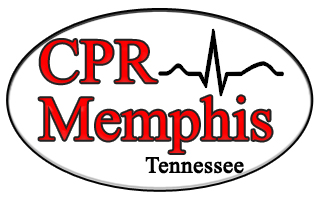UNKNOWN LAB REPORT
Jillian Thornton
December 3, 2013
Microbiology
INTRODUCTION
This study was done using the information learned in Microbiology thus far. The study emphasizes the importance of recognizing an unknown microorganism. In the health field it can be used to diagnose an illness or disease in a patient. This allows the physician and staff to accurately treat and cure the disease. Microorganisms also need to be studied in order to manufacture new drugs and treatments for disease. Microorganisms are everywhere, and knowing how to properly identify them is crucial. In this study two microorganisms are identified using the proper procedures learned in Microbiology laboratory.
MATERIALS AND METHODS:
A test tube labeled number 109 was handed out by Professor Snaric. The test tube was said to contain two unknown microorganisms, one Gram Positive and one Gram Negative (this information was provided by the instructor). The procedures performed in this study were conducted according to the class laboratory manual written by McDonald (1) unless stated otherwise.
The first procedure that was necessary was to isolate the two unknown microorganisms. Using the isolation streak method described in the laboratory manual a streak was made on a Nutrient Agar plate. This was performed to try to obtain two separate colonies of bacteria. The Nutrient agar plate was incubated at 37 degrees for four days. After the plate was incubated and growth appeared there were two visibly different colonies of microorganisms present. Using an inoculating loop, both colonies were introduced to their own Nutrient agar plate and then incubated at 37 degrees for two days. This was done to completely isolate the two separate microorganisms. After incubation and appearance of growth a Gram stain was performed on each culture and the results were recorded. Following the Gram stain a series of biochemical tests were performed on each of the cultures. Using the results of the Gram stain each culture received different biochemical tests. Each test was performed according to the Microbiology laboratory manual (1).
Table 1 lists the test, purpose, reagents and results for culture #1.
Table 2 lists the test, purpose, reagents, and results for culture #2.
All of the following tests were performed on culture #1:
- MSA test
- Mannitol
- Urea
- Nitrate
All of the following tests were performed on culture #2.
- MSA test
- Mannitol
- Simmons Citrate
- Methyl Red
- Urea
RESULTS:
In unknown #109, culture #1 appeared white in color and was small in comparison to culture #2. Culture #2 appeared cloudy and seemed to spread further out across the Nutrient Agar plate. After the Gram stain was viewed of each culture, #1 was a Gram positive Staphylococcus, culture #2 was a Gram negative rod. These results were used as the basis for what tests to perform in the future. Table I lists the tests, results, observations and interpretations for culture #1. Table II correlates the same for culture #2. There were some contradicting results in Table I, which will be discussed in the next section; they are marked by an asterisk. The flowcharts show how the conclusions were reached.
Culture #1 Biochemical Tests & Results
|
Test |
Reagents/ Media |
Temperature |
Observations |
Results |
Interpretations |
|
Gram Stain |
Crystal violet, Iodine, Alcohol, Safranin |
N/A |
Purple round bunches of bacterium |
Gram Positive Staphylococcus |
The bacterium is a classified as a Staphylococcus. |
|
MSA* (2x) |
Mannitol salt agar plate |
37°C |
Yellow appearance to plate, growth |
Positive |
Bacterium can metabolize Mannitol and produce an acid as byproduct. |
|
Mannitol (2x) |
Mannitol fermentation tube |
37°C |
Liquid in tube stayed red, no air in durham tube |
Negative |
Bacterium is unable to metabolize Mannitol. |
|
Urea |
Test tube of urea |
37°C |
Liquid in tube changed from orange color to pink |
Positive |
Bacterium is able to hydrolyze urea using enzyme urease. |
|
Nitrate |
Nitrate tube, Nitrate I & II |
37°C |
After adding Nitrate I & II, liquid in tube changed to red color |
Positive |
Bacterium is capable of reducing nitrate to nitrite. |
Culture #2 Biochemical Tests & Results
|
Test |
Reagents/ Media |
Temperature |
Observations |
Results |
Interpretations |
|
Gram Stain |
Crystal violet, Iodine, Alcohol, Safranin |
N/A |
Pink rods |
Gram negative rods |
The bacterium is classified as a gram negative rod. |
|
MSA |
Mannitol salt agar plate |
37°C |
Yellow appearance to plate, growth |
Positive |
Bacterium can metabolize Mannitol and produce an acid as byproduct. |
|
Mannitol |
Mannitol fermentation tube |
37°C |
Liquid in tube changed from red to yellow, presence of air in durham tube |
Positive |
Bacterium can metabolize Mannitol and produce gas as byproduct. |
|
Simmons Citrate |
Citrate slant |
37°C |
Tube changed from green to blue |
Positive |
Bacterium can use citrate as its sole carbon source. |
|
Methyl Red |
MRVP Tube, Methyl Red reagent |
37°C |
After adding methyl red, color changed from light yellow to a darker yellow |
Negative |
Bacterium is a not able to produce acid from glucose fermentation. |
|
Urea |
Test tube of urea |
37°C |
Color did not change, stayed orange |
Negative |
Bacterium is not able to hydrolyze urea using enzyme urease. |
FLOWCHART
*Removed Due to Formatting Issues*
DISCUSSION/ CONCLUSION:
For the first culture, the results were found by first properly isolating the culture so that it contained no contamination. After the gram stain was complete and no contamination was observed; a series of biochemical tests were performed on the culture. The Gram stain immediately ruled out two of the five given bacterium provided on the chart by Professor Snaric. This is chart that was used for the remainder of the study. The Gram stain revealed that the bacterium was a Staphylococcus. The first test was a Nitrate test, revealing a positive result which ruled out one of the three remaining possible bacterium’s. Next a MSA test was done which turned out positive, however a Mannitol fermentation test was also done and it revealed a negative result. These two tests contradicted with each other. A Urea test was done next and with a positive result it pointed to only one bacterium. This once again contradicted with the MSA test. Another MSA and Mannitol fermentation test was done to reassure the first result, once again they contradicted. It was concluded that for this particular study the MSA test was unreliable because all other tests supported the bacterium Staphylococcus epidermidis. S. epidermidis was the correct identification for this culture and other than the MSA test being unreliable no other problems were encountered.
The second culture’s results were also found using the chart provided by the instructor. A gram stain was done on a properly isolated culture and revealed it was a Gram negative rod shaped bacterium. After it was concluded that there were no signs of contamination, the biochemical tests were performed. The first test done was the Mannitol fermentation test along with the MSA test. Both tests confirmed a positive result meaning acid was produced following Mannitol metabolism. This eliminated two out of five possible Gram negative bacterium. The next test conducted was the Simmons Citrate test, which revealed a positive result. This eliminated yet another possible bacterium. Only two possibilities remained so two different tests where done for the sake of validity. Both the Methyl Red test and the Urea test showed a negative result which confirmed that the bacterium was Enterobacter aerogenes. E.aerogenes was the correct identification for culture #2 and no problems were encountered finding this bacterium.
A little research on one of the two cultures found in this study was done on Staphylococcus epidermidis. Staphylococcus epidermidis is a bacterium that lives on the human skin. Unlike many other types of bacteria Staphylococcus epidermidis does not live in a mucosa but on the external skin or the epidermis. Normally, Staphylococcus epidermidis is beneficial to the human body as it inhibits the growth of Staphylococcus aureus which is pathogenic (2). While Staphylococcus epidermidis is not usually a pathogenic bacterium it can cause infection. Staphylococcus epidermidis is one of the most common nosocomial (hospital acquired) infections and this is due to common use of medical devices entering the body. Things such as catheters and heart valves can become contaminated with Staphylococcus epidermidis by contact with the skin and then act as a fomite to cause the bacterium to reach the bloodstream (2). The problem with this bacterium and the infection it can cause is that it has built up a resistance to many antibiotics including penicillin.
Staphylococcus epidermidis has also developed the ability to form a slimy capsule (biofilm) which allows it to survive on the medical devices until it reaches the bloodstream. Staphylococcus epidermidis can become a crucial player in preventing Methicillin-resistant Staphylococcus aureus (MRSA) which is a life threatening infection (2). Humans should use this very beneficial bacterium to their advantage by working to prevent the bacterium from entering the bloodstream. If a way is found to decrease the number of infections caused by Staphylococcus epidermidis latching on to medical devices, it would be an all-around appreciated bacterium.
REFERENCES:
1. McDonald, Virginia, Mary Thoele, Bill Salsgiver, and Susie Gero. Lab Manual for General Microbiology. Meramec: St. Louis Community College, 2011. Print.
2. Segre, Julia A. “Staphylococcus Epidermidis Pan-genome Sequence Analysis Reveals Diversity of Skin Commensal and Hospital Infection-associated Isolates.” Genome Biology (2012): n. pag. Genome Biology. 25 July 2012. Web. 21 Nov. 2013. http://genomebiology.com/2012/13/7/r64





